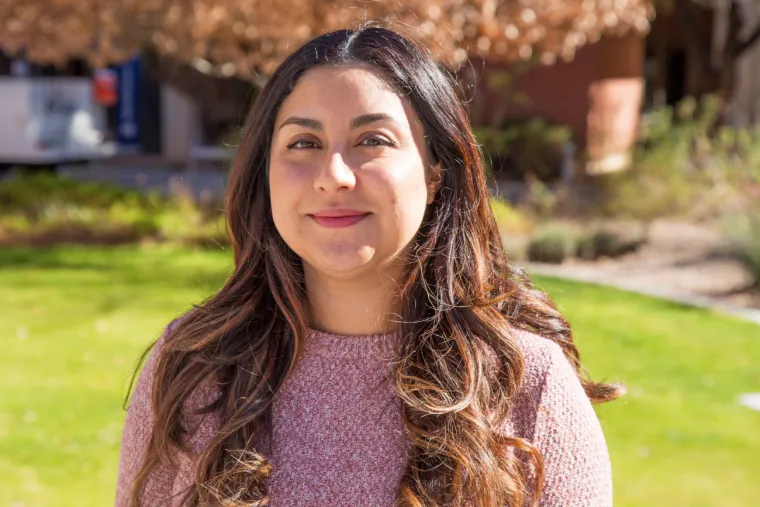Monique Crawford, MSN, MS: ‘I found my group of people’
A former cardiac nurse pivots toward medicine and is on her way to a residency training program in internal medicine.

Monique Crawford, MSN, MS
Anna C. Christensen, College of Medicine - Tucson
Monique Crawford, MSN, MS, had been interested in health care since she was a high school student in Phoenix. After receiving bachelor’s and master’s degrees in nursing from Northern Arizona University and the University of Arizona College of Nursing, respectively, she dove into her career.
“Once I started working, I realized there was much more that you could do,” she recalled. As a clinical coordinator for the Sarver Heart Center’s Structural Heart Disease Program, she saw how health professionals worked together to solve challenging problems.
“Seeing how physicians work together as a team, combining different specialties to come up with a plan for a high-risk patient, was eye-opening,” she said. “I was thinking about going back to school, and my physician mentors guided me down the medical school path.”
Making a career change
In 2019, after working as a nurse for eight years, Crawford was accepted into the Pre-Medical Admissions Pathway (P-MAP), an intensive preparation program for promising students who have faced considerable obstacles. Through P-MAP, she earned a master’s degree in cellular and molecular medicine and built a solid foundation for the next four years of her education.
“I loved P-MAP,” she said. “P-MAP provided essential study skills and introduced topics we would later revisit with more depth, while also learning from professors we would see again in medical school. Having a familiar face when you start medical school felt very welcoming.”
She didn’t know it at the time, but meeting her tightknit cohort of six other P-MAP students would be instrumental in ensuring that she had a strong support network when medical school began in July 2020, the first summer of the COVID-19 pandemic.
“We were on Zoom, so it was challenging to try to connect with people,” she recalled. “Luckily, I had been in P-MAP, so I started medical school having friends already, which I think makes a difference.”
Even in the thick of the pandemic, she was able to obtain clinical experience as a medical student, and was often able to draw from her previous nursing experience.
“I was more familiar with certain things, like the roles of ancillary staff, how to get ahold of people at Banner, the paging system, the electronic medical record,” she said. “But medical school was still very humbling. I was very comfortable as a nurse, but as a doctor, you take on a different role. There was a lot I needed to learn.”
Finding her people
Despite her background in cardiology, Crawford now finds herself drawn toward pulmonary critical care, a specialty that was rich with female mentors, which she says aren’t always easy to find.
“I met Dr. Billie Bixby, Dr. Laura Meinke and Dr. Arista Chand — all female physicians — and felt like I found my group of people,” she recalled. “It felt very comfortable being in the ICU.”
She has applied to residency programs in internal medicine with the intention to apply for a fellowship in pulmonary critical care after completing her residency training.
Alongside the challenges that come with medical school, Crawford has drawn strength from friends and family.
“Maintaining that balance of studying, getting your work done, and having fun with your friends — especially people who have gone through the same thing — was meaningful,” she said. “My family’s also a good support system. If I needed to de-stress, I would see my nephew. If I wanted some fun, I would hang out with my sisters. If I needed some mom time, I would hang out with my mom. If I needed a friend and not to talk about medicine, I had friends outside of medical school.”
Show your support for future physicians entering the P-MAP Program by giving to the College of Medicine – Tucson, selecting “Other” and writing in “P-MAP.”

